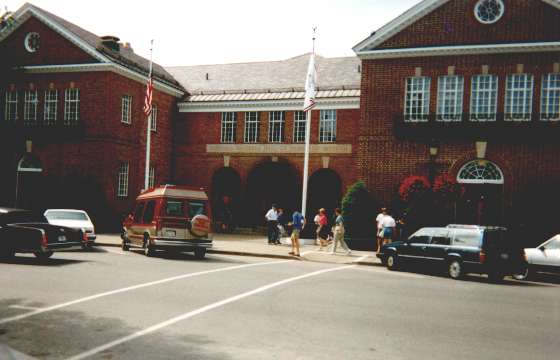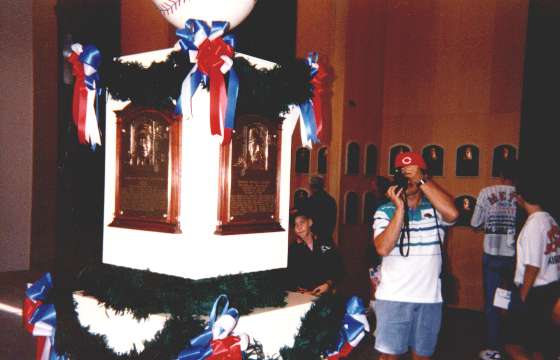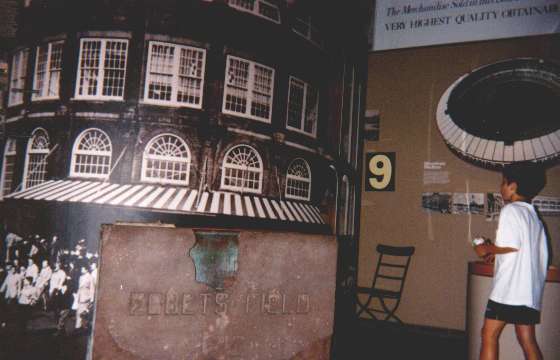 The main entrance to the National Baseball Hall of Fame and Museum, 1992. |
 Fans examine the plaques of the year’s Hall of Fame inductees. |
 The Stadiums exhibit includes a cornerstone from Brooklyn’s Ebbets Field. |
 The main entrance to the National Baseball Hall of Fame and Museum, 1992. |
 Fans examine the plaques of the year’s Hall of Fame inductees. |
 The Stadiums exhibit includes a cornerstone from Brooklyn’s Ebbets Field. |
This was the break the sporting-goods magnate was looking for. In the face of mounting evidence that the game had evolved from the British sport of cricket as well as the children’s game of rounders, Spalding, one of the early professional baseball stars in the 1870s, now had “evidence” of the game’s all-American origin. Spalding’s report to the presidents of the two major leagues leaned heavily on Graves’ account, setting historical research back for the better part of half a century.
The Spalding report was still the official line when, in 1936, a clamor arose to honor the greats of the game, including players like Babe Ruth who had recently retired, with a hall of fame. Cooperstown, a resort community on the shore of Otsego Lake where it becomes the headwaters of the Susquehanna River, was designated to receive the new hall as well as a ball field to be called Doubleday Field, in honor of the Civil War general who was alleged to have invented the national pastime.
In 1939, the National Baseball Hall of Fame and Museum opened, a block from the lake and a block from the river. The date commemorated the 100th anniversary of Doubleday’s invention, according to Graves. Since then, as historians have proved that the game did not have such a clear beginning, but arose from several games being played in the New York area during the 1840s, the Hall has had to balance the myth with the historical record. Fortunately, it does so admirably.
Around the corner from the Hall, on Fair Street, is the National Baseball Library. The Library, an ongoing research project of the Hall of Fame, is the largest repository of baseball-related documents in the nation. Its main hall also holds the plaques for recipients of the J.G. Taylor Spink Award, for baseball journalism, and the Ford C. Frick Award, for baseball broadcasting.